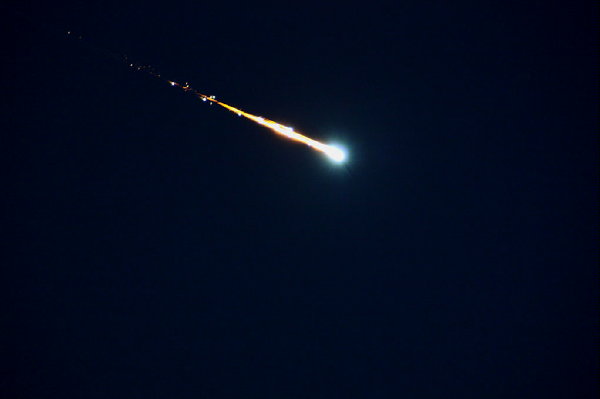An Article In Meteorite-Times Magazine
by Robert Verish
![]()
An Article In Meteorite-Times Magazine
by Robert Verish
From Asteroids to Meteoroids to Meteors to Meteorites
Guess what? The International Astronomical Union (IAU) originally defined the word "meteor" to be used as BOTH the term for the solid object, as well as, the light-phenoma that it produces.
For years I've been told that the term "meteor" only applies to the light phenomenon that we see high in the night sky, but not to the physical object that is falling from space. I was told that the International Astronomical Union (IAU) convened a committee titled "Commission 22" back in 1961 to officially define the terms for all of these meteoric objects, such as meteoroids, meteors, and meteorites.
And for years I've known that the continuum from asteroid to meteorite includes the interim transition of meteoroid to meteor. But I eventually discovered that, according to the Commission 22 definition, the term "meteoroid" cannot be applied to the physical object that produces a meteor. Only as long as a solid object is orbiting in interplanetary space, can it be called a "meteoroid". Hence, the word "meteoroid" could not be used for that same object while it is moving through the atmosphere, which produces the meteor phenomenon.
So these narrowly defined terms for "meteor" and "meteoroid" resulted in there being no officially-approved word for the solid particle that produces the meteor light phenomenon. At least, that appeared to be the case to me. That is, until recently, when I read the original IAU definition for "meteor". It appears that Commission 22 had originally intended that there be a broader definition for the term "meteor" that included the physical object, as well as, the light phenomenon which it produces. See below:
Where do we go from here?
From here on we need to embrace the [original] concept, as defined by the IAU, that a meteor is BOTH the physical object that enters into the Earth's atmosphere, as well as, the light phenomenon that it produces.
Here is a link to a website for IAU Definitions, that can be used as a reference for details on terms and terminology.
Relative size of this solar system's planets and planetismals.
If you have any questions relating to theNaming of Minor Planets or Small Body Nomenclature, you can submit your terminology questions to

IAU - Naming Astronomical Objects
REFERENCES:
UPDATE (2012-08-20):
Article first published online: 26 FEB 2010
© The Meteoritical Society, 2010

Definitions:
Bolides on Wikipedia:
Discussion about Bolides on Wikipedia:
Link to search engine Photos of Fireballs with image data:
For for more information, please contact me by email:
Bolide*chaser
Meteoroid - Wikipedia, the free encyclopedia
en.wikipedia.org/wiki/Meteoroid - 63k - In astronomy, what are called 'bolides'? - Yahoo! Answers
answers.yahoo.com/question/Cloudbait Observatory - Fireballs
www.cloudbait.com/science/fireballs.html - 23k - define
www.meteorobs.org/bagnall/define.htm - 10k -
http://www.amsmeteors.org/define.html
http://en.wikipedia.org/wiki/Bolides
http://en.wikipedia.org/wiki/Talk: Bolides

My previous articles can be found *HERE*
